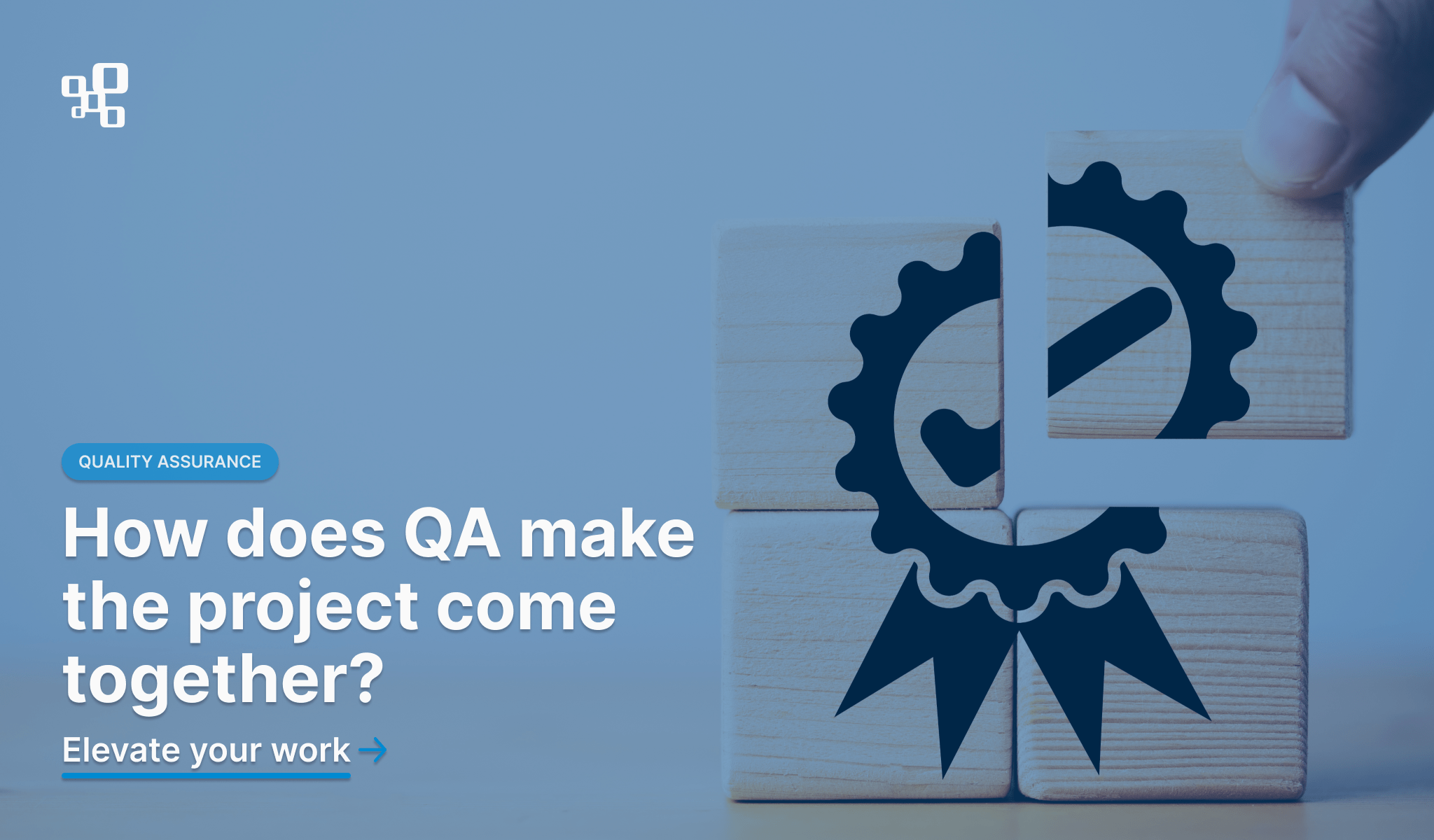Sometimes you can’t see the forest for the trees. And sometimes you miss the critical issue in your application simply because everyone was focused on the details and no one noticed what it looks like from a wider perspective. In this article, you will learn how QA can fill this gap in your team and make the project come together.
Left hand, right hand
To understand the role of a QA in your team, and the value that they can bring to the project, we must first discuss the development process, and the dynamics between frontend and backend developers.
Frontend and backend are two distinct components of a software application, website, or system that work together to provide a complete user experience. They have different roles and responsibilities. Backend refers to the server-side of an application, while frontend is concerned with the client-side. The two sides communicate with each other, but are worked on mostly separately.
Consequently, it often happens that neither of the groups have a full picture of the software that they are developing. It’s not uncommon for the backend developer to see for the first time how the application works only during a testing session, since it wasn’t needed in the earlier phases of development.
Developers, however, are not to blame. Their job is to focus on the part of the application that they’re responsible for, and make sure that it works just like it was intended to. But how to build a consistent system if your left hand doesn’t know what your right hand is doing, and the other way round? Is it effective to work blindly based on the requirements, having no real idea of the final product?
To make it all possible, there is an additional role in the team that needs to be covered. A pair of watchful eyes that would follow the movements of both hands, and notice whenever they go astray or contradict one another.
Pair of watchful eyes
To be that pair of watchful eyes is the role of a QA. Quality Assurance specializes in holding the product of your development to certain standards. Not only do they scrutinize your application to make sure it meets the requirements, but they can also find potential flaws in the plan itself. Although there is a procedure known as pull request review, its main purpose being to increase the quality of code, it often turns out to be insufficient when faced with the actual functionality issues. QA can fill this gap, and provide care in the missing areas.
They stand at the position from which they can observe all sides involved in the project, while at the same time staying objective, since they’re not directly involved in any part of the development. It allows QA to get the bird’s eye view of the whole application, its functionality, performance, user experience, and all the factors that went into building it.
It’s also important to emphasize how well-versed QA usually is when it comes to not only the requirements and the general purpose of the application, but also every part that comes out of development, since they all go through QA’s review before moving on any further. Therefore, QA is fully exposed to all building blocks that eventually make up an application. It results in a broad perspective and high understanding of the system as well as its potential flaws.
Being the first person that sees the whole application pieced together, QA is able to point out issues that otherwise would go unnoticed. They can also pass on the backend’s perspective to a frontend developer, and the other way round.
Spark of conversation
In a sense, QA is like a bridge between frontend and backend developers, aware of both points of view, and having the right tools to bring them together. That’s why QA often takes up the role of the initiator of conversation. They motivate the rest of the team to think through certain aspects of the plan, discuss the potential issues, and implement necessary modifications.
Effective communication lies at the heart of successful product development. You can save a lot of time and resources by acknowledging the importance of discussion, and making enough space for it. Since we’re all only humans, our communication is not always perfect. We think and express our thoughts in various ways, often not compatible with one another. It’s surprisingly easy to get misunderstood by your peers. And while sometimes such misunderstandings can be positively harmless, other times they can lead to massive issues in your application’s functionality or user experience.
Imprecisely or misleadingly phrased requirements should definitely be avoided. However, not always is it clear that the error in communication even occurred until later in the development when it turns out that some parts of the application are built differently than they should have been. It’s natural that such mistakes might happen. And that’s why a person dedicated to carefully observing the whole process, from planning to the finished product, is essential to an efficient, successful development.
QA – The prophet of disaster
It’s good to have a positive vision and ambitious goals. However, it’s equally as important to stay grounded and alert in case anything goes wrong. QA is a person that can keep you down to earth by predicting possible issues and identifying their root causes. As unfavorable as this role might be, it can tremendously increase your chances to succeed in the long run.
Without a QA in your team you can easily overlook potential threats, since many of them are difficult to recognize for someone who is not specifically searching for them. Such negligence can lead to serious consequences. It’s always better to prevent than cure. Solving issues as soon as possible lowers the risk of financial and reputational harm that they might cause you. Additionally, it can prevent your team from unknowingly repeating the same mistakes over and over again.
How does QA make the project come together?
Quality Assurance serves as an ultimate connector between different parts of your project. It takes into account multiple points of view and multiple factors that can affect the quality of the product, and creates a coherent bigger picture. By:
- considering perspective of both frontend and backend developers,
- examining effectiveness of current processes,
- identifying potential risks and issues,
- keeping an eye on the entirety of the project,
- voicing concerns and prompting discussions,
- streamlining communication between different parts of the team,
a QA Specialist is able to truly bind the project together, and help establish optimal processes that would result in high quality products.
Check our Quality Assurance offer, and start building solutions that your clients can truly rely on.













